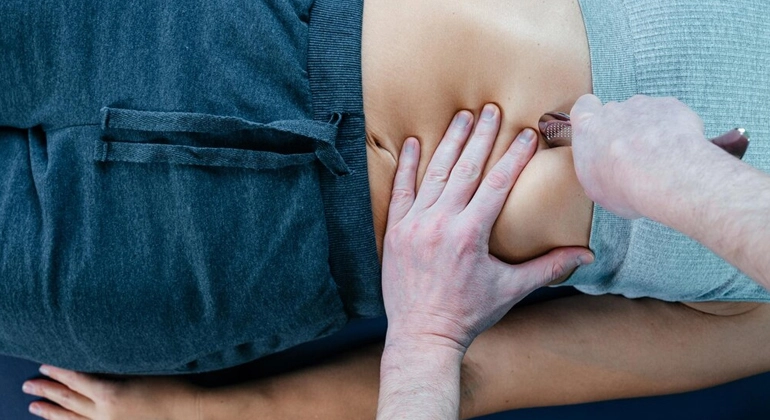
Have you ever felt weird around your belly button? Maybe you’ve seen it moving strangely or sticking out oddly. If this sounds familiar, you might have something called navel displacement.
This guide will help you understand what navel displacement is all about. We’ll talk about why it happens, what signs to look for, and ways to treat it. Whether you’re interested in natural remedies or other holistic methods, stick with us to learn more about navel displacement treatment.
What is Navel Displacement?
Navel displacement, also known as a misplaced belly button, happens when your belly button isn’t where it should be. It might be off to the side, up, or down, and sometimes it twists around. Usually, it’s not a big deal if it doesn’t hurt, but sometimes it can cause skin problems, infections, or other health issues.
This condition can affect both kids and adults, but it’s more common in women. It might also make periods more painful and cause extra bleeding.
If you’re experiencing any of these issues, it’s crucial to make an appointment with a doctor.
It’s kind of like when your spine isn’t in the right place. Just like the spine, if your belly button moves, it can mess up your stomach muscles. Usually, it moves up or down, but sometimes it goes sideways, though that’s rare.
Signs of a Displacement Belly Button
When your belly button isn’t where it should be, it can show some signs. Here are some common ones:
- Your belly button might point to the side or front instead of being in the center.
- You might notice a lump on one side of your belly button.
- Your belly button might look sunken in or pulled inside.
- It might seem like your belly button is moving towards your spine.
- There might be a weird gap between your belly muscles.
- Your belly button might stick out more than usual.
- You might feel a hard lump around your belly button.
- Sometimes, there could be stuff coming out or bleeding from your belly button.
- Causes of a Misplaced Belly Button
Lots of things can make your belly button move from where it’s supposed to be. Sometimes, it happens when you’re still growing inside your mom’s belly. Other times, it’s because of how the umbilical cord is connected when you’re born. And sometimes, it could be because of a problem you’re born with or after having surgery.

Navel Displacement Causes
The belly button is like the center of our body. If it moves from its normal place, it can happen because of different reasons.
- Lifting of heavy objects.
- Sudden, abrupt movements.
- Improper sexual intercourse.
- Childbirth, Pregnancy.
- Wrong food habits leading to constipation.
Several factors can contribute to the development of navel displacement. These include:
- Weak Abdominal Muscles: Weakness in the abdominal muscles, often due to pregnancy, obesity, or heavy lifting, can lead to the protrusion of the belly button.
- Genetic Predisposition: Some individuals may have a genetic predisposition to developing umbilical hernias, making them more susceptible to this condition.
- Strain on the Abdominal Wall: Excessive strain on the abdominal wall, such as persistent coughing or constipation, can weaken the muscles and increase the risk of navel displacement.
Symptoms of Navel Displacement
The symptoms of navel displacement can vary depending on the severity of the condition. Common signs include:
- A visible bulge or protrusion near the belly button, particularly when standing or straining.
- Discomfort or pain in the abdominal region, especially during physical activity or when lifting heavy objects.
- Nausea or vomiting, which may occur if the hernia becomes trapped or strangulated, cutting off blood supply to the protruding tissue.
Seeking Navel Displacement Treatment in Gurgaon
For individuals experiencing symptoms of navel displacement in Gurgaon, seeking timely treatment is crucial for managing the condition effectively. Gurgaon boasts a range of healthcare facilities and specialists offering advanced treatment options for umbilical hernias.
Expert Diagnosis and Evaluation
The first step in treating navel displacement is to seek expert diagnosis and evaluation from a qualified healthcare professional in Gurgaon. During the consultation, the doctor will perform a physical examination and may recommend additional tests, such as an ultrasound or CT scan, to assess the extent of the hernia.

Non-Surgical Treatment
In mild cases of navel displacement, non-surgical treatment approaches may be sufficient to alleviate symptoms and prevent further complications. These may include:
- Lifestyle Modifications: Making lifestyle changes such as avoiding heavy lifting, maintaining a healthy weight, and practicing good posture can help reduce strain on the abdominal muscles and prevent the hernia from worsening.
- Physiotherapy: Specific exercises targeted at strengthening the abdominal muscles can help improve muscle tone and provide support to the weakened area, reducing the risk of hernia recurrence.
- Support Garments: Wearing supportive garments, such as abdominal binders or hernia belts, can help provide additional support to the abdominal wall and alleviate discomfort associated with navel displacement.
Surgical Treatment Approaches
In cases where non-surgical approaches are ineffective or the hernia is causing significant discomfort or complications, surgical intervention may be recommended. Gurgaon offers advanced surgical techniques for repairing umbilical hernias, including:
- Laparoscopic Hernia Repair: This minimally invasive procedure involves making small incisions in the abdomen and using a laparoscope (a thin, flexible tube with a camera) to repair the hernia with mesh reinforcement.
- Open Hernia Repair: In some cases, open surgery may be necessary to repair the hernia. During this procedure, the surgeon makes a larger incision near the hernia site to access and repair the weakened abdominal muscles.
Choosing the Right Healthcare Provider
When seeking navel displacement treatment in Gurgaon, it's essential to choose a reputable healthcare provider with experience in treating umbilical hernias. Consider the following factors when choosing a healthcare provider:
- Expertise and Experience
- Facilities and Technology
- Patient Reviews and Testimonials
- Patient-Centered Care
•Expertise and Experience: Look for surgeons who specialize in hernia repair and have a proven track record of successful outcomes. •Facilities and Technology: Ensure that the healthcare facility is well-equipped with advanced technology and facilities to provide comprehensive hernia care. •Patient Reviews and Testimonials: Reading reviews and testimonials from previous patients can give insight into the quality of care and patient satisfaction.
Recovery and Follow-Up Care
Following navel displacement treatment, proper recovery and follow-up care are essential for ensuring a smooth recovery process and minimizing the risk of complications. Your healthcare provider in Gurgaon will provide detailed instructions on post-operative care, which may include:
- Pain Management: Taking prescribed pain medication as directed to manage discomfort during the recovery period.
- Activity Restrictions: Avoid strenuous activities and heavy lifting for a specified period to allow the abdominal muscles to heal properly.
- Follow-up appointments: Arrange follow-up appointments with your surgeon to track your progress and address any concerns or complications that may arise.
Lifestyle Recommendations
Lifestyle Recommendations
In addition to medical treatment, adopting healthy lifestyle habits can play a significant role in managing navel displacement and preventing recurrence. Some lifestyle recommendations include:
- Maintaining a Healthy Weight: Obesity can increase the risk of navel displacement, so maintaining a healthy weight through a balanced diet and regular exercise is important.
- Avoiding Smoking: Smoking can impair the body’s ability to heal and increase the risk of complications following surgery, so quitting smoking is recommended.
- Practicing Good Posture: Improving posture can help reduce strain on the abdominal muscles and prevent the hernia from worsening.
Navel displacement, or umbilical hernia, can be a source of discomfort and inconvenience for those affected. However, with timely diagnosis and appropriate treatment, individuals in Gurgaon can find relief from their symptoms and improve their quality of life. Whether opting for non-surgical approaches or advanced surgical techniques, seeking care from experienced healthcare professionals is essential for achieving optimal outcomes. By following post-operative instructions and adopting healthy lifestyle habits, individuals can effectively manage navel displacement and prevent recurrence, allowing them to enjoy a healthier, more active lifestyle. If you’re experiencing symptoms of navel displacement in Gurgaon, don’t hesitate to seek assistance from trusted medical experts who can provide personalized treatment options tailored to your needs.
-
What are the common symptoms of navel displacement?
Common symptoms of navel displacement, also known as an umbilical hernia, include a visible bulge near the belly button, discomfort or pain in the abdominal region, and nausea or vomiting if the hernia becomes trapped or strangulated.
-
Can navel displacement be treated without surgery?
In mild cases, non-surgical treatment approaches such as lifestyle modifications, physical therapy, and supportive garments may be effective in managing navel displacement. However, surgical intervention may be necessary for more severe cases or if non-surgical methods fail to provide relief.
-
What are the surgical treatment options for navel displacement?
Surgical treatment options for navel displacement include laparoscopic hernia repair and open hernia repair. Laparoscopic hernia repair involves making small incisions and using a laparoscope to repair the hernia with mesh reinforcement, while open hernia repair requires a larger incision near the hernia site to access and repair the weakened abdominal muscles.
-
Is navel displacement surgery safe?
Navel displacement surgery is generally considered safe, especially when performed by experienced surgeons in reputable healthcare facilities. However, as with any surgical procedure, there are risks involved, including infection, bleeding, and recurrence of the hernia. Before deciding, it's important to talk with your healthcare provider about the possible upsides and downsides of surgery.
-
What is the recovery process like after navel displacement surgery?
The recovery process after navel displacement surgery varies depending on the type of procedure performed and the individual's overall health. In general, patients can expect some discomfort and limitations on physical activity for a few weeks following surgery. It's crucial to follow your surgeon's post-operative instructions carefully, including taking prescribed medications, avoiding strenuous activities, and attending follow-up appointments for monitoring and guidance.


